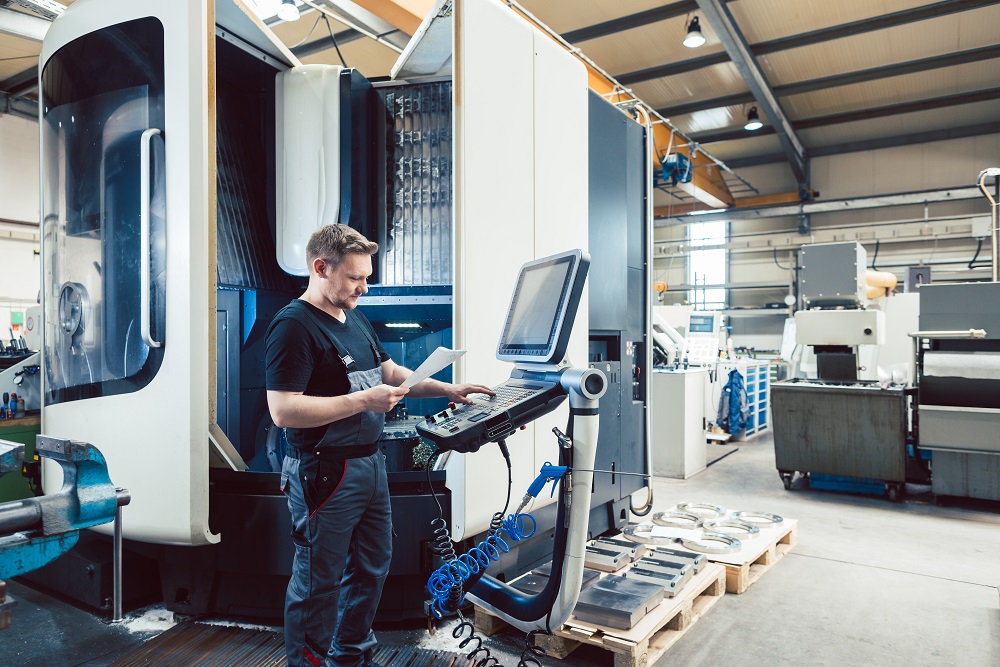No professional athlete would hit the field without testing their best plays — and the same goes for metalworking fluid. Before a company charges their sumps with a new metalworking fluid, they’ll want to undergo a thorough testing trial. They know choosing the wrong one can wreak havoc on metalworking shops, leaving residue in sumps, corroding machinery or parts, and even contributing to cases of dermatitis.
That’s why the testing period is critical. It’s an opportunity to make sure a metalworking fluid will meet a shop’s specifications and needs.
Though the ASTM International (formerly known as the American Society for Testing and Materials) offers numerous testing standards, metalworking shops can develop their own rules for testing trials to avoid being caught on the blind side.
Pre-Game Before the Test
Before bringing in new fluid to test, metalworking shops should first determine what they need from a fluid. This will help narrow down the choices for testing trials. Some details to consider are:
- Types of applications and materials that will be machined using the fluid
- Fluid requirements for specific industries, such as aerospace
- Water chemistry of the shop, which will affect how the fluid is diluted
It’s also important to evaluate the existing metalworking fluid’s strengths and weaknesses. For example, if tool life is subpar or a fluid develops a foul odor quickly, make sure to discuss and determine your options with a new fluid supplier.
At the same time, before making a decision on what fluid and supplier to use, metalworking shops should collect information about foam and misting, typical fluid life with proper maintenance, fluid safety, and correct ways for disposal.
In the Field: Evaluating Fluid During a Testing Trial
Just as a coach wouldn’t sign a new player without carefully evaluating their skills, metalworking shops shouldn’t ignore certain indicators when testing out a new fluid. They’ll want to take note of contaminants, like chips and tramp oil, that might form in the sump, and remove them as they would normally to prevent bacteria from forming.
They’ll also want to check the concentrations and pH daily to make sure the fluid is stable. This is a good time to pay attention to how long tooling lasts compared to when the old fluid was in use.
What employees on the floor say is important, too. For example, if they’re reporting fewer cases of dermatitis, foaming and misting, and odors, this may be a deciding factor in choosing a new fluid. How the finished materials look will play a big part in the final selection as well.
On the Sidelines: Evaluate Your Provider
The testing trial is an opportunity to evaluate the fluid provider. This is when shops can determine the kind of support a supplier offers. For example, do they offer suggestions to help make operations more efficient? Also, gauge how their personnel interact with your employees, which will give you an idea of how the working relationship may be.
Remember: The fluid provider is absolutely critical if there’s a problem with the fluid, and metalworking shops need to know how they will react. For instance, if a fluid starts to develop a bad odor, the metalworking shop should be able to get recommendations for best practices to extend the fluid’s life, not a sales pitch for new products. If the provider isn’t responsive to issues now, they likely won’t be once the shop becomes a full-fledged customer.
Stay in the Game with the Right Fluid
Before committing to a new coolant, it’s important to make sure it’s right for both the shop floor and the materials being machined. Basic indicators like pH levels, tool life, and worker feedback will help with the selection process. However, the vendor’s willingness to respond to questions and issues will set the tone for the relationship — and that’s just as important.
Create a game plan for a testing trial by contacting Master Fluid Solutions at +1 800-537-3365 or email us at [email protected].

